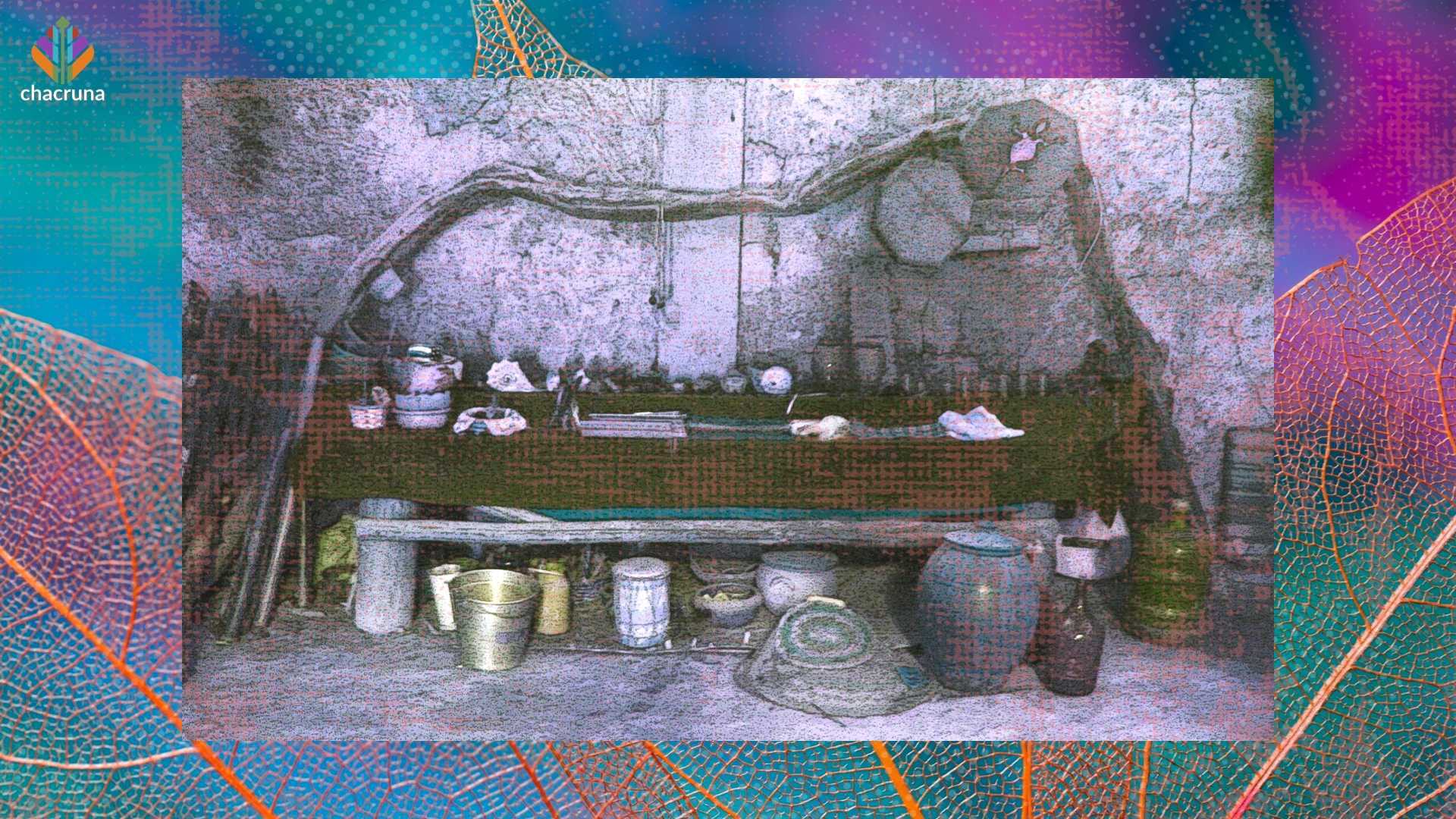- Forest Medicines and Global Alliances Between the Yawanawá People and Santo Daime - August 9, 2024
- Guarani Shamanism in the University - May 2, 2023
- Esther Jean Langdon: Half a Century of Research About Shamanism and Ayahuasca - December 15, 2021
In 2015, the Guarani spiritual leaders Alcindo Wherá Tupã and Geraldo Karaí Okenda were lecturers in the Transversal Training Program in Traditional Knowledge at the Federal University of Minas Gerais (UFMG, Belo Horizonte, Brazil). This initiative is part of a broad movement of epistemic inclusion known as Encontro de Saberes (Knowledge Encounters) that has grown in Brazilian public universities, especially since 2015. This project began at the University of Brasília (UnB) in 2010 as a consequence of the implementation of policies of inclusion and affirmative action in the universities, especially for Black and Indigenous people. The Knowledge Encounters project is an important step in a movement for inclusion of Black and Indigenous traditional knowledge holders within Brazilian university faculties, which would help build multiepistemic academic environments (Carvalho, 2010).1
The Knowledge Encounters project is an important step in a movement for inclusion of Black and Indigenous traditional knowledge holders within Brazilian university faculties, which would help build multiepistemic academic environments
This text describes Alcindo and Geraldo’s participation in the course “Arts and Crafts of Traditional Knowledge: Healing and Care,” taught at UFMG in 2015. It draws connections to my previous fieldwork on a contemporary shamanic network called Medicine Alliance (Rose, 2010). The Medicine Alliance emerged in southern Brazil in the late 1990s based on dialogues between an extended Guarani family; leaders of the international shamanic group Sacred Fire of Itzachilatlan, also known as Red Path; a local Santo Daime community; and members of the Multidisciplinary Indigenous Health Team that served the Indigenous villages along the coast of Santa Catarina. This network connects members of these diverse collectives based mainly on their common interests in “traditional medicine” and “spirituality.”2
The Guarani, “Reclaiming Tradition,”and the Medicine Alliance
The protagonism of Alcindo Wherá Tupã and Rosa Poty Djá’s extended family in the formation of the Medicine Alliance is associated to the particularities of the trajectories of this elderly couple and to their project of reclaiming and strengthening the Guarani shamanic system. Alcindo and Rosa arrived in Santa Catarina in the late 1980s with their children and family members as part of a larger movement to reoccupy Guarani traditional territories in southern Brazil, beginning in the 1970s. In 1987, they settled in the village Yynn Moroti Wherá or M’Biguaçu, located on the southern coast of Santa Catarina, with the dream of resuming the “Guarani way of life,” or nhandereko.
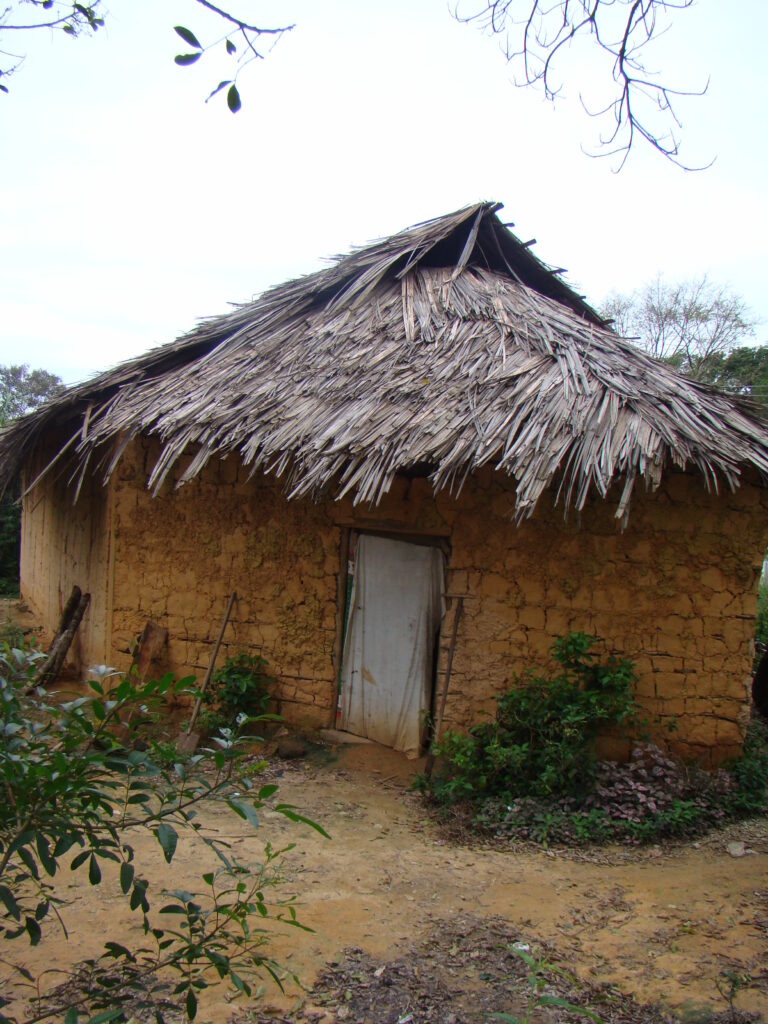
Alcindo and Rosa are widely known and respected as healers and spiritual leaders endowed with great power and knowledge in the Guarani networks in southern Brazil. Their concern for cultural revitalization is expressed through a series of creative initiatives undertaken in areas such as health, education, and shamanism. The reoccupation of M’Biguaçu village by this extended family coincides with the onset of a process of “reclaiming tradition” that was intensified in the 1990s, including important initiatives such as: the creation of an indigenous choir; the construction of a new prayer house (opy); the building of the first bilingual school; the demarcation of the Indigenous Land in 2003; and the resumption of nightly rituals of praying, singing, and dancing. Another important factor was an openness to strategic dialogues with different non-indigenous actors, often directing the benefits that come from these dialogues to the Indigenous communities. The role of Alcindo and Rosa’s extended family in the formation of the Medicine Alliance network and the inclusion of the Amazonian drink, popularly known as ayahuasca, as part of the nightly rituals held in the village’s prayer house are also a part of this broader process.
Further, these initiatives are also in dialogue with a broader process of cultural revitalization undertaken by the Guarani of southern Brazil through strategies that include bilingual education, promotion of cultural performances, and implementation of sustainability and knowledge revival projects. In the specific case of Alcindo and Rosa’s extended family, the interest of Santo Daime and Sacred Fire’s members in Indigenous knowledge, motivated by images that are common in these groups, such as those of the “spiritual” or “ecological Indigenous,” “primordial knowledge,” and “traditional medicine,” was also an important part of this process (Langdon and Rose, 2012; Rose and Langdon, 2013, Rose and Okenda 2021).
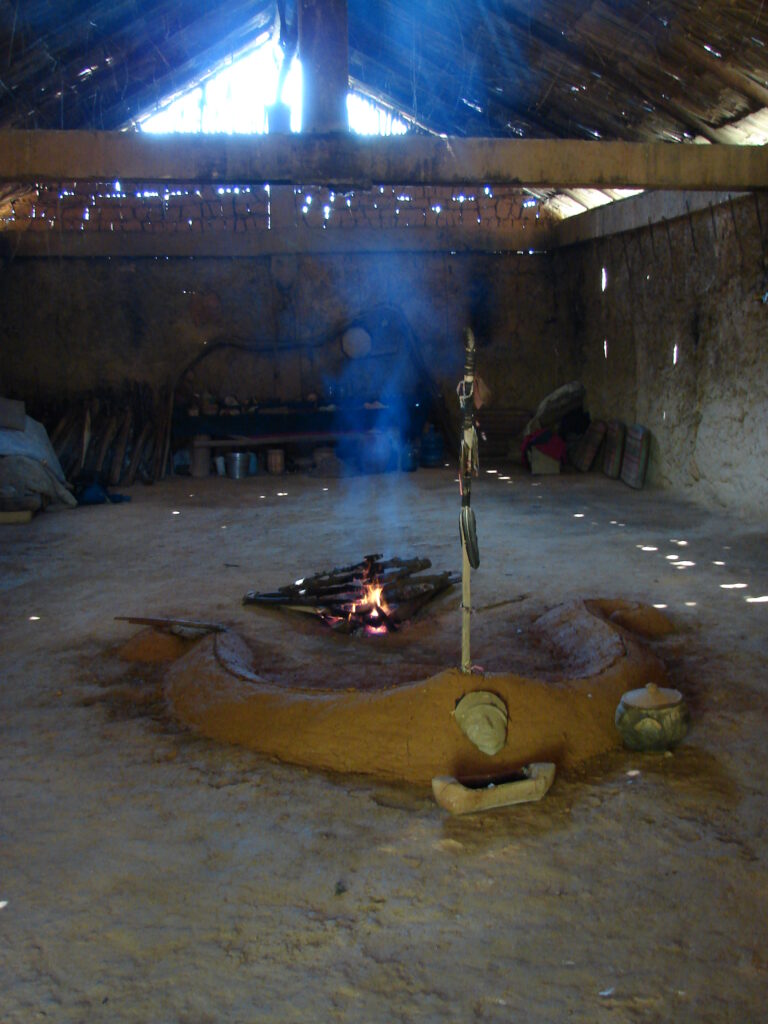
Guarani Classes at the University
These images also appeared in the classes Alcindo and Geraldo taught at UFMG in 2015. They were lecturers on one of the modules of the course “Arts and Crafts of Traditional Knowledge: Healing and Care,” composed of four classes of about four hours each, and directed to a group of 40 students from different undergraduate courses. The lessons took place in conventional classrooms and also in different outdoor spaces within the university campus. They were marked by Alcindo’s and Geraldo’s speeches, by Guarani chants, by the tobacco smoke (smoked in petynguás3 or straw cigarettes) and fire, which was always lit during the outdoor classes. The moments of silence were also very important, indicating another way of dealing with speech and with knowledge itself. The moments of silence, the absence of a clearly defined beginning and end, the apparent informality, and the themes and issues addressed all contributed to highlighting the relationship with otherness. It was evidently an unconventional type of class in the academic setting, which generated interest but also caused some discomfort and uneasiness among the students.
Some of the main themes discussed by Alcindo included:
- the importance of always remembering Nhanderu4 and always praying;
- comments on his shamanic learning process, describing how he learned from his father, who was “a doctor of the Guarani,” and involving comparisons between his own knowledge and the knowledge of non-Indigenous doctors;
- the importance of the petynguá (Guarani pipe) and tobacco in this learning process, involving a comparison between the petynguá and the Christian Bible (printed on paper), and also implicitly bringing up a comparison between distinct knowledge systems;
- an emphasis on the importance of relatives, family, elder people and their knowledge, especially to guide the younger ones.
Geraldo is an expert in translating Indigenous ideas and concepts for non-Indigenous audiences, which is related to his trajectory as a bilingual teacher, educator, and Indigenous researcher. During the classes, he often commented and explained Alcindo’s narratives to non-Indigenous students. In addition, he made comments on his own shamanic learning process and the importance of spirituality for the Guarani, a topic connected to the emphasis Alcindo placed on the importance of prayer and of always remembering Nhanderu. With regard to the process of learning Indigenous knowledge, the importance of the elders emphasized by Alcindo also reappears. The elders are defined by Geraldo as “a living library,” and he highlights that they have a fundamental role in Guarani education. This is connected to the importance he gives to history and oral knowledge, which are passed on from generation to generation, as a form of preservation and continuity of the Guarani people and culture.
Many of the discussions brought up by Geraldo are connected to his own experience as an Indigenous teacher and researcher and as a shamanic apprentice.
Many of the discussions brought up by Geraldo are connected to his own experience as an Indigenous teacher and researcher and as a shamanic apprentice. This appears, for instance, in the comparisons he proposed between Indigenous and academic knowledge and the learning processes involved in both cases. He affirmed several times that the younger Guarani often need to transit between “two worlds,” Indigenous and non-Indigenous, and mediate between two distinct knowledge systems. He also often highlighted issues related to nature and spirituality. In the following, I transcribe an excerpt from one of his narratives, in which he discusses some of these themes.
We are now united so that we can strengthen this knowledge, within ourselves and create a relationship with nature, because we are part of it. Nature is a teacher. In the Indigenous culture, the forest is a botanical book, and the sky is a textbook, especially the constellations […]. This is a path that the knowledge from the Great Creator left us, to observe the sky. Thus we learn how to do things. It is a relationship that we all have, but sometimes we forget. We forget because today’s world is different than the world of our ancestors, so sometimes we forget about ourselves […]. The knowledge of the elders is part of all relations. That is why we say aguydjevete,5 there are some who know the expression aho mitakuye oyas’in.6 These expressions [mean] all by our relations. We are a part of nature too. We are all brothers. The trees, the water, the animals. We are part of the family of nature. Sometimes we forget to thank nature, which is our life too. According to the teachings of the elders, from the moment we learn how to walk nature passes on all the information we need. When children are born they already come with a mission, they already come with a purpose to continue this path. The relationship we have with nature is important, it gives us life, and it also asks us for help. We have a bond with nature. That is why we have to thank the trees, the water, and the waterfalls. According to the Indigenous knowledge, the waterfalls and the trees have souls, they have spirits, they feel that we need to take care of them. We have a relationship with them and we need to pass on this knowledge. When the elders go into the forest they can see all the spirits. They know the plant medicines, they know all the trees, and they talk to the trees because they know they have spirits.
(Geraldo Karaí Okenda, lecture given at UFMG in May 2015)
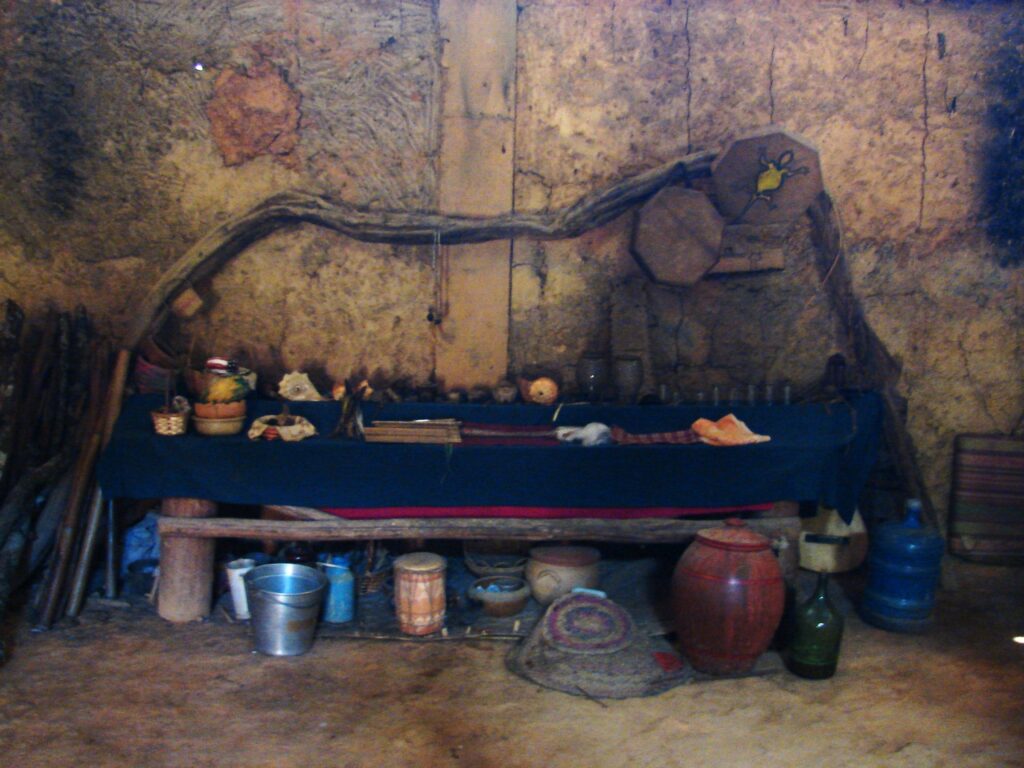
The Significance of Guarani Teachings in the University
I focus on the creativity present in Alcindo and Geraldo’s narratives during the classes, bringing up core aspects of the Guarani cosmology and shamanic system and seeking to translate them for the non-Indigenous students. I suggest this indicates possible transformations in the classical roles of the “shaman” in the contemporary world (Landon, 2013). Asides from being responsible for traveling between the different worlds that constitute the cosmos and negotiating between the diverse beings (human and more-than-human) that inhabit these worlds, current Indigenous shamans are also responsible for establishing cosmopolitical negotiations and connections with the so called “non-Indigenous world.” These negotiations often involve attempts of translating concepts that are part of Indigenous cosmologies. However, we must also remember that there are limits and equivocations in these translation processes (Viveiros de Castro, 2004).
I suggest that [the translation of Guarani cosmology and shamanic system for non-indigenous students] indicates possible transformations in the classical roles of the “shaman” in the contemporary world.
The circulation of Indigenous groups and representatives in the Brazilian ayahuasca field, and the alliances and dialogues between Indigenous groups and several non-Indigenous spiritual groups, have multiplied over the past decades.7 Alcindo and Geraldo’s narratives in the classes they taught at UFMG point to creative use of images associated with generic Indigenous shamanism that circulates widely in these networks, such as those of the “spiritual” and “ecological Indigenous,” the “rescue of the past,” and of “traditional medicine.” Possibly the creative Indigenous appropriations of these images are connected to their transit in contemporary shamanic networks, such as the Medicine Alliance, as well as in other spaces of exchange between different knowledge systems, such as the Knowledge Encounters. In conclusion, these creative reinventions have implications in multiple directions.
An extended version of this text was published in Portuguese in Revista Ilha (Rose and Okenda 2021). I thank the team from the UFMG Transversal Training Program in Traditional Knowledge for their support, and especially Alcindo Wherá Tupã and Geraldo Karaí Okenda for sharing their knowledge. This research was made possible by the support from CAPES and CNPq.
Art by Luana Lourenço.
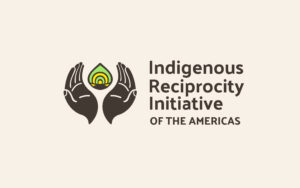
Discover the Indigenous Reciprocity Initiative of the Americas
Notes
1 For more information on the Encontro de Saberes in Brazil, see Barbosa Neto, Rose and Goldman 2020 and 2021.
2 It is not my purpose to deepen this discussion here. For more information about the Medicine Alliance, see Rose 2010, Langdon and Rose 2012 and 2014, Rose and Langdon 2013, Rose and Okenda 2021.
3 Petynguá is the native term for the Guarani pipe, where they smoke tobacco or pety. Tobacco is a plant of great cosmological significance for the Guarani and has a central role in most of their shamanic rituals (Mello, 2006). When smoked on the petynguá, pety aids the Guarani spiritual leaders to contact other cosmological planes, and produces knowledge for making good decisions and choosing the right paths (Mello, 2006).
4 Although the Guarani recognize several deities it is common for them to speak of Nhanderu, or “our Father,” in a unified manner (Pissolato 2007).
5 The term aguydjevete is associated to the concept of aguydje, which means “perfection,” “completeness,” and “immortality of the spirit” (Mello, 2006: 35). The suffix ete means “true.” Thus, an approximate translation for aguydjevete would be “true perfection.” The expression refers to the instability and temporariness of the human condition: for the Guarani, humanity oscillates between two poles: the perfection or divination in life – aguydje – to which it aspires, and the possible animal transformation, an ever-present threat (Pissolato, 2007).
6 Lakota expression frequently employed by Sacred Fire’s members and commonly translated as “for all our relations.” During my fieldwork with the Medicine Alliance, I often noticed people using the expressions aguydjevete and aho mitakuye oyas’in as equivalent (Rose, 2010).
7 See Labate and Coutinho 2014, Assis and Rodrigues 2018, Stloze Lima 2018, Platero and Rose 2022.
References
ASSIS, Glauber L. and Jacqueline A. Rodrigues. Uma bebida, muitas visões: apontamentos sociológicos sobre a II Conferência Mundial da Ayahuasca. Horizontes Antropológicos, 24(51): 135-165, 2018.
CARVALHO, José Jorge. Los estúdios culturales en America Latina: interculturalidade, acciones afirmativas y encuentro de saberes. Tabula Rasa, 12: 229-251, 2010.
LABATE, Beatriz C. and COUTINHO, Thiago. O meu avô deu ayahuasca a para o Mestre Irineu: reflexões sobre a entrada dos índios no circuito urbano de consumo de ayahuasca no Brasil. Revista de Antropologia, 57(2): 216-250, 2014.
LANGDON, E. Jean. New Perspectives of Shamanism in Brazil: Shamanisms and Neo-Shamanisms as Dialogical Categories. Civilizations: Revue internationale d’anthropologie et de sciences humaines, 61(2): 19-35, 2013.
LANGDON, E. Jean and Isabel S. Rose. Contemporary Guarani shamanisms: “traditional medicine” and discourses of native identity in Brazil. Health, Culture and Society, 3(1): 29-48, 2012.
LANGDON, E. Jean and Isabel S. Rose. Medicine Alliance: contemporary shamanic networks in Brazil. In: LABATE, Beatriz Caiuby e Clancy Cavnar (eds.), Ayahuasca shamanism in the Amazon and beyond. Oxford/New York: Oxford University Press, 2014. p. 81-104.
MELLO, Flávia Cristina. Aetchá nhanderukuery karai retarã: Entre deuses e animais. Xamanismo, parentesco e transformação entre os Chiripá e Mbyá Guarani. PhD dissertation in Anthropology, Universidade Federal de Santa Catarina, Florianópolis, 2006.
PISSOLATO, Elizabeth. A duração da pessoa. Mobilidade, parentesco e xamanismo mbya (Guarani). São Paulo, Editora da UNESP, 2007.
PLATERO, Lígia D. and Isabel S. Rose. Forest medicines, kinship alliances and equivocations in the contemporary dialogues between Santo Daime and the Yawanawá. Anthropology of Consciousness, 33(2): 279-306, 2022.
ROSE, Isabel S. Tata endy rekoe – Fogo Sagrado: encontros entre os Guarani, a ayahuasca e o Caminho Vermelho. PhD dissertation in Anthropology – Universidade Federal de Santa Catarina, Florianópolis, 2010.
ROSE, Isabel S. and E. Jean Langdon. Chamanismos guarani contemporâneos en Brasil: un estudio de transfiguración cultural. Revista Colombiana de Antropologia, 49(1): 105-127, 2013.
ROSE, Isabel S. and Geraldo K. Okenda. Xamanismos guarani e tradução no Encontro de Saberes. Revista Ilha, 23(3): 21-40, 2021.
STOLZE LIMA, Tânia. A planta redescoberta: um relato do encontro da ayahuasca com o povo Yudjá. Revista do Instituto de Estudos Brasileiros, 69: 118-136, 2018.
VIVEIROS DE CASTRO, Eduardo. Perspectival anthropology and the method of controlled equivocation. Tipiti, 2(1): 03-22, 2004.
Take a minute to browse our stock:
Did you enjoy reading this article?
Please support Chacruna's work by donating to us. We are an independent organization and we offer free education and advocacy for psychedelic plant medicines. We are a team of dedicated volunteers!
Can you help Chacruna advance cultural understanding around these substances?


